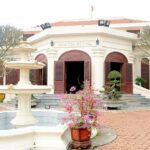A Historic Fishing Village in Phan Thiet: The Story of Con Cha
Nestled within the heart of Duc Thang fishing village, a traditional fishing community in Binh Thuan Province, Con Cha fish market is more than just a hub for seafood trade. It stands as a witness to the historical and cultural flow of the South Central Coast of Vietnam. Since ancient times, this place has been a docking point for migrants from Central Vietnam, who, in their journey of pioneering since the 17th century, brought with them the unique fishing method of “Cha” – thus laying the foundation for a distinct fishing community.
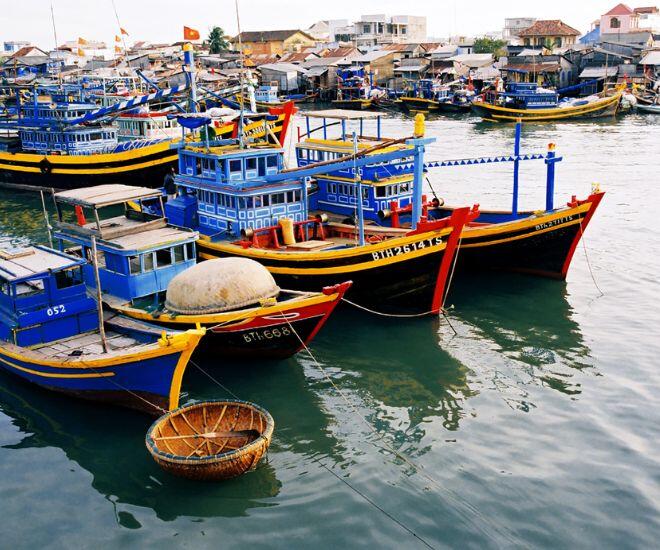
The name “Con Cha” originated from this very practice. Initially, “Con” referred to a sandbank along the river, while “Cha” described the method of fishing by piling up dense trees in the river to lure and trap fish. As this technique thrived in this region, the name “Con Cha” not only denoted the sandbank but also extended to other landmarks such as “Con Cha Hamlet,” “Con Cha Wharf,” “Con Cha Estuary,” and most notably, “Con Cha Fish Market.”
The Largest Seafood Distribution Center in the South Central Coast
Con Cha fish market serves as the largest seafood transshipment center in Binh Thuan Province and its neighboring areas. Tons of fish, squid, shrimp, and other seafood are distributed from here to various provinces and cities. Even before the sun rises over the sea, hundreds of fishing boats return after spending days and nights in the vast ocean. At the wharf, baskets brimming with fresh seafood are swiftly unloaded, sorted, weighed, and loaded onto vehicles to be transported to markets, sometimes even reaching distant provinces.
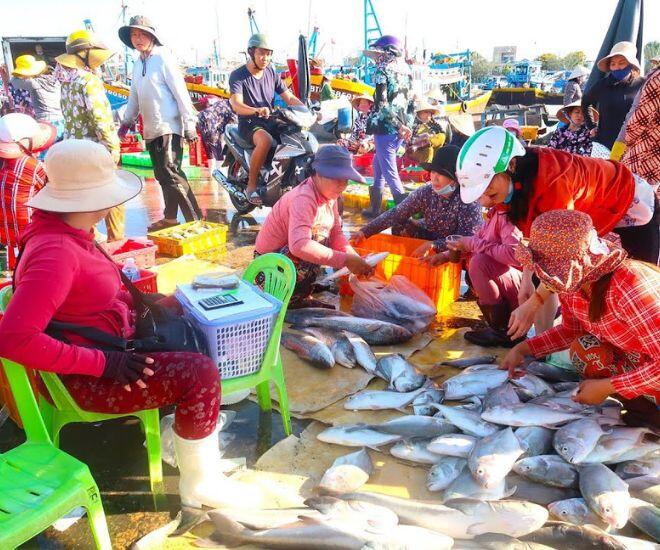
The market is primarily active from 3 am to around 7 am. During this time, the space along the port resonates with a lively symphony of voices haggling over prices, the sound of fish flapping in baskets, and the roar of motorcycles carrying seafood deeper into the town. Together, they create a vibrant melody that captures the essence of coastal life.
In 1992, with the planning and construction of Phan Thiet fishing port, Con Cha fish market officially became a part of the port complex. Two years later, in 1994, the Phan Thiet Fishing Port project commenced, spanning over 30,000 square meters. The construction of the port also involved the relocation of Con Cha residents to areas such as Tien Duc (Tien Thanh), Go Me (Thanh Hai), and Van Thanh. Although no longer a distinct “hamlet” as it once was, the name Con Cha continues to be cherished by the people of Phan Thiet as a symbol of their connection to the maritime tradition.
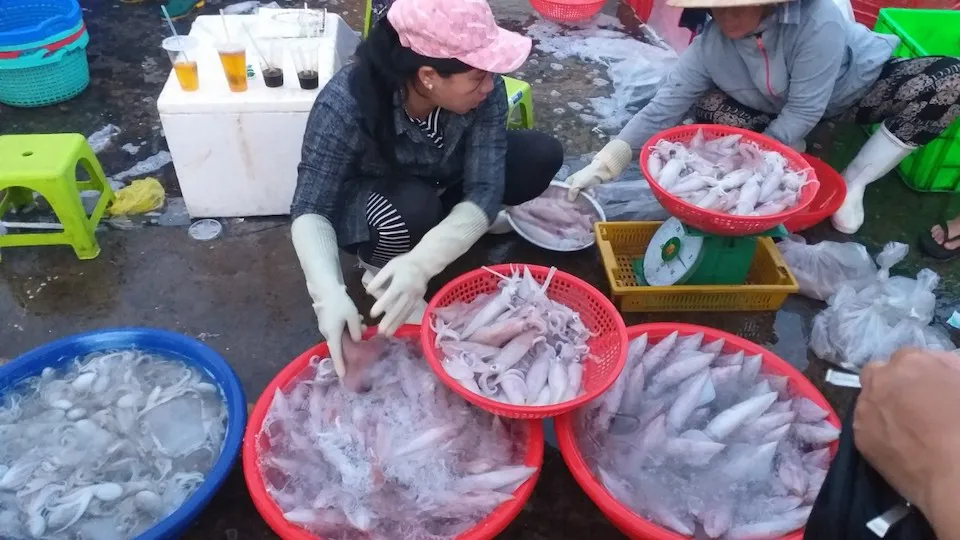
In 1999, the port was completed and put into operation, becoming one of the largest fishing ports in Binh Thuan Province. Con Cha not only serves as a safe harbor for hundreds of fishing vessels but also as the main departure point for passenger ships to Phu Quy Island – a frontier island in the East Sea.
A Must-Visit Destination for Travelers
In recent years, Con Cha fish market has become a unique attraction in Phan Thiet tourism. Many domestic and international visitors choose to wake up early to immerse themselves in the bustling atmosphere of the coastal morning market. Under the soft glow of yellow street lamps, trays of fresh squid and baskets of tuna and mackerel, still glistening with seawater, are displayed abundantly, creating a true “color market.” Here, the silvery sheen of fish blends with the salty scent of the sea, the distinctive aroma of seafood, and the smoky fumes from fishing boat engines, forming a unique fragrance that belongs to the ocean.
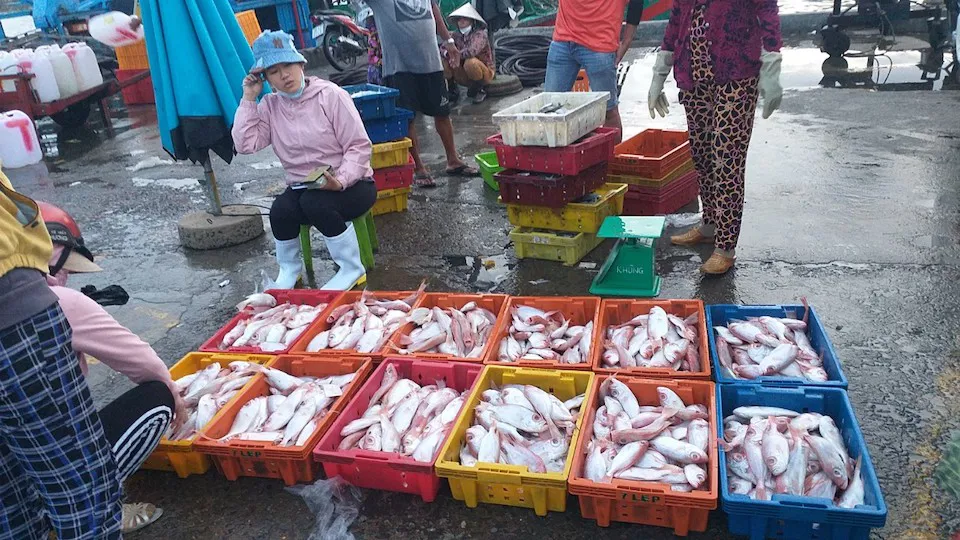
Beyond being a place of trade, the market is also a space where the local culture thrives – where buyers and sellers call out to each other in the distinct accent of the South Central Coast, reflecting the strong sense of community. Visitors come here not only to buy seafood but also to listen to the stories of the fishermen, to understand their way of life, and to appreciate a lifestyle deeply rooted in the sea.
Con Cha holds a special place in the hearts of the people of Phan Thiet, as it once bore the footprints of Teacher Nguyen Tat Thanh (later known as President Ho Chi Minh) when he taught at the Duc Thanh School in late 1910. During his breaks, Teacher Thanh often took his students on walks, including to Con Cha beach, where he learned about the lives of fishermen, conversed about the fishing profession, and instilled practical lessons in his students’ minds. These stories, though simple, are retold by the locals with great pride, as they are living testimonies of history.
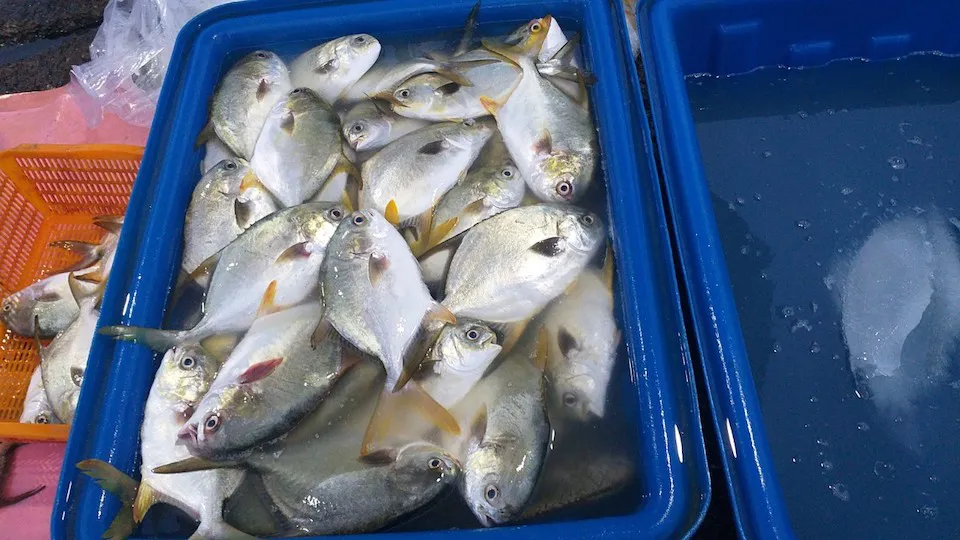
Despite the many changes Con Cha has undergone, from geographical shifts to demographic and infrastructural transformations, the name continues to be uttered with affection by the locals. It represents not just a fish market or a seaport but a cultural symbol of a community deeply connected to the sea. While Con Cha today may differ significantly from how it was a hundred years ago, its soul remains intact – embodying the resilient, cohesive, and salty spirit of the fishermen.
Amid the hustle and bustle of modern life, the existence of Con Cha fish market stands as a testament to the preservation of traditional culture in the development of the marine economy. It is a place where people not only trade seafood but also share a sense of community, uphold the flavors of the sea, and cherish the memories of a straightforward and generous Phan Thiet.
The Luxurious Estates of Emperor Bao Dai: A Glimpse into the Opulent Abodes of Vietnam’s Last Emperor, Including a Residence Once Beloved by Empress Nam Phuong, Just a Stone’s Throw Away from Ho Chi Minh City
“Hidden from many, the lavish estates of Emperor Bao Dai still stand today, boasting opulent architecture and prime locations. One such estate, located near Ho Chi Minh City, was once the favored retreat of Empress Nam Phuong. These grand residences offer a glimpse into the opulent past and showcase the exquisite tastes of Vietnam’s last emperor and his beloved wife.”




